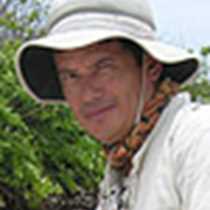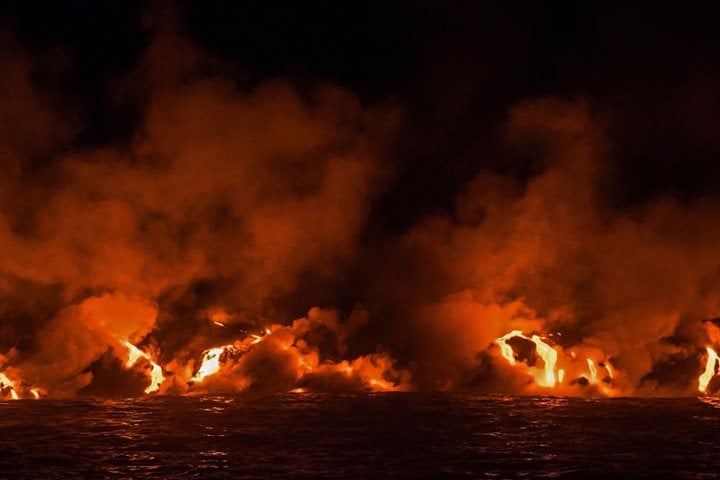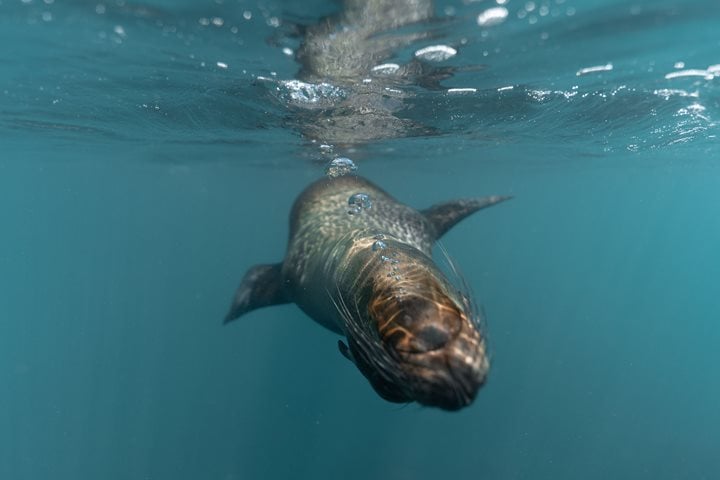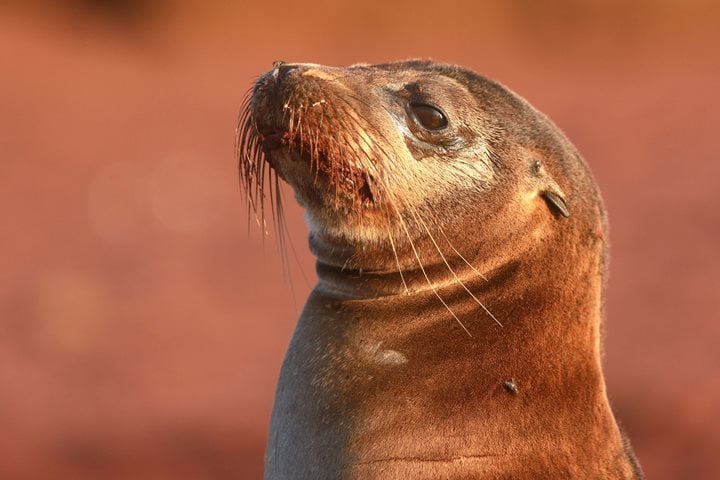Named in honor of Fernando de Aragon and Isabel de Castilla, the King and Queen of Spain who helped Columbus’ expedition that discovered America, Fernandina and Isabela are the youngest islands of the archipelago and home of incredible endemic creatures that captivated us during this day.
With the first beams of sun, early risers tried to find some marine life from the sundeck while we circumnavigated the north of Isabela Island. The gigantic Ecuador and Wolf volcanoes looked spectacular with colorful lava fields decorated with a yellowish color, harmonizing with the sun on this beautiful morning. After breakfast the captain announced our arrival at the equator and we celebrated with a special ceremony, while we crossed we did the limbo under the Ecuadorian flag. As soon we dropped anchor at Punta Vicente Roca we headed our Zodiacs along the Ecuador Volcano to observe evidence of the last eruptions which occurred long ago. Long lines of black lava, or dikes, decorated the gigantic volcano while in the air brown noddy terns, blue footed boobies, and frigate birds looked for some food. The sun appeared, warming up this place and marine iguanas did not lose time and started swimming, trying to eat some seaweed. Galapagos penguins joined in the fun and fast as torpedoes hunted and fed on small black striped salemas. We headed back to the National Geographic Islander so our guests could get ready for the snorkeling activity. Our explorers found different species of fish, but probably the most incredible creature that impressed us the most for its tameness were the Pacific green sea turtles. Of course, Galapagos penguins and flightless cormorants delighted our guests who enjoyed swimming with incredible creatures like nowhere else in the world.
Once back onboard, the National Geographic Islander pulled anchor and began to navigate to our next destination, Fernandina Island, which is the youngest of the archipelago. After our Darwin talk we headed to the small dock. We crossed a small forest of white and red mangroves and finally arrived at the black lava field where hundreds of marine iguanas tried to warm up their bodies with the last rays of the sun. We also found sea lions, some flightless cormorants, and in the air, two Galapagos hawks flew indifferently as they looked for delicious iguana. As soon as the iguanas noticed the presence of that predator, many of them began to run to a safer place in the crevices of rocks. We also found some flightless cormorants drying their stumpy wings while in the ocean sea turtles and sea lions swam with the last beams of this beautiful day.







